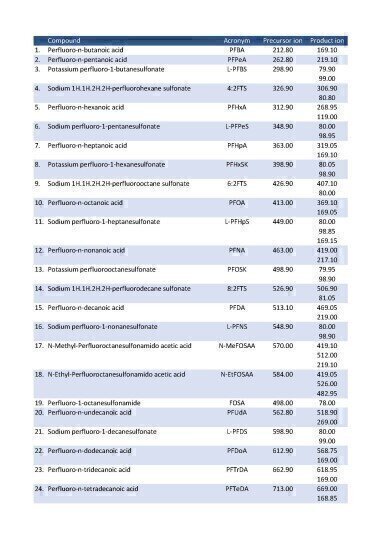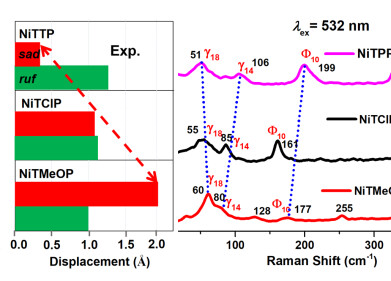Mass spectrometry & spectroscopy
Detecting PFAS Compounds in Food Packaging
Mar 09 2023
Authors: Milica Jovanovic, BSc, MSc, University Professor DI Dr Erich Leitner, Institute of Analytical Chemistry and Food Chemistry, Graz University of Technology, Austria
Better assessing the hidden threat of ‘forever chemicals’
Poly- and perfluoroalkyl substances (PFAS) are widely used in everyday applications, and there are approximately 5,000 known PFAS structures. This article presents a targeted approach for detecting and quantifying 24 PFAS commonly found in paper and board matrices.
Poly- and perfluoroalkyl substances - PFAS - are man-made chemicals which are widely used in a range of applications, from water-resistant clothing to food-packaging materials. Often called ‘forever chemicals’, these compounds have a special chemical structure: multiple fluorine atoms attached to an alkyl chain.
As PFAS are highly resistant towards chemical and physical strains, they are long-lasting, bio-accumulative and unfortunately toxic.
In recent years, PFAS have been increasingly detected in water, soil, air, as well as in wildlife and human beings. As a result, some PFAS have recently begun to be regulated or even phased out. But so far only a few of the substances have been assessed for risk by the European Food Safety Authority (EFSA) or the Environmental Protection Agency (EPA).
Assessing the threat of PFAS in food packaging
PFAS can enter the human body through various sources, but one of the major pathways is food consumption. There are several different analytical methods used for detecting and quantifying PFAS in food-packaging materials. However, the most selective and sensitive method is liquid chromatography coupled with triple quadrupole mass spectrometry - LC-MS/MS.
Researchers at the Institute of Analytical Chemistry and Food Chemistry at the Graz University of Technology in Austria tested a simple method for extracting PFAS from paper and board matrices using accelerated solvent extraction (ASE), followed by quantification using LC-MS/MS.
They analysed 24 PFAS substances most commonly found in paper food-contact materials. For each substance, they identified the precursor ion and product ion, as well as the retention time (Table 1).
For this, an extraction method was used in combination with a chromatographic separation process and mass-selective detection. Specifically, the PFAS analysis was carried out by injecting 5 µL of the prepared solutions into a Shimadzu LCMS-8050 system with the parameters. The analytes were chromatographically separated using a Restek Raptor C18 column. To separate PFAS which could potentially leach out from the instrument upstream of the injector, a Restek Delay column was used.
The calibration solutions were analysed at five injections for each concentration. Both at high-range and low-range concentration solutions, the regression coefficient (R2) was above 0.99 for most analytes. Even after extraction the regression coefficient was above 0.99 for the majority of analytes, except for higher PFAS. The average recovery between all the analytes is 88.8 %, which is within the required criteria set by the EU Reference Laboratory for Halogenated POPs.
Despite their many benefits, PFAS currently pose a risk worth measuring. The researchers in Graz succeeded in developing a method to specifically identify and precisely quantify PFAS in food packaging. They concluded that the Shimadzu LCMS-8050 reliably measures PFAS concentration ranges up to 0.01 pg/µL (which translates to 0.025 ng/g of sample), and that its combination of high sensitivity with outstanding speed parameters makes it well-suited for high-throughput multi-component analysis. It can be beneficially used as an integral part of a simple and efficient method for the monitoring and quantification of PFAS in paper-based food-packaging materials.
Digital Edition
Lab Asia 32.2 April
April 2025
Chromatography Articles - Effects of small deviations in flow rate on GPC/SEC results Mass Spectrometry & Spectroscopy Articles - Waiting for the present to catch up to the future: A bette...
View all digital editions
Events
Apr 09 2025 Tokyo, Japan
Apr 22 2025 Hammamet, Tunisia
Apr 22 2025 Kintex, South Korea
Analytica Anacon India & IndiaLabExpo
Apr 23 2025 Mumbai, India
Apr 23 2025 Moscow, Russia






















